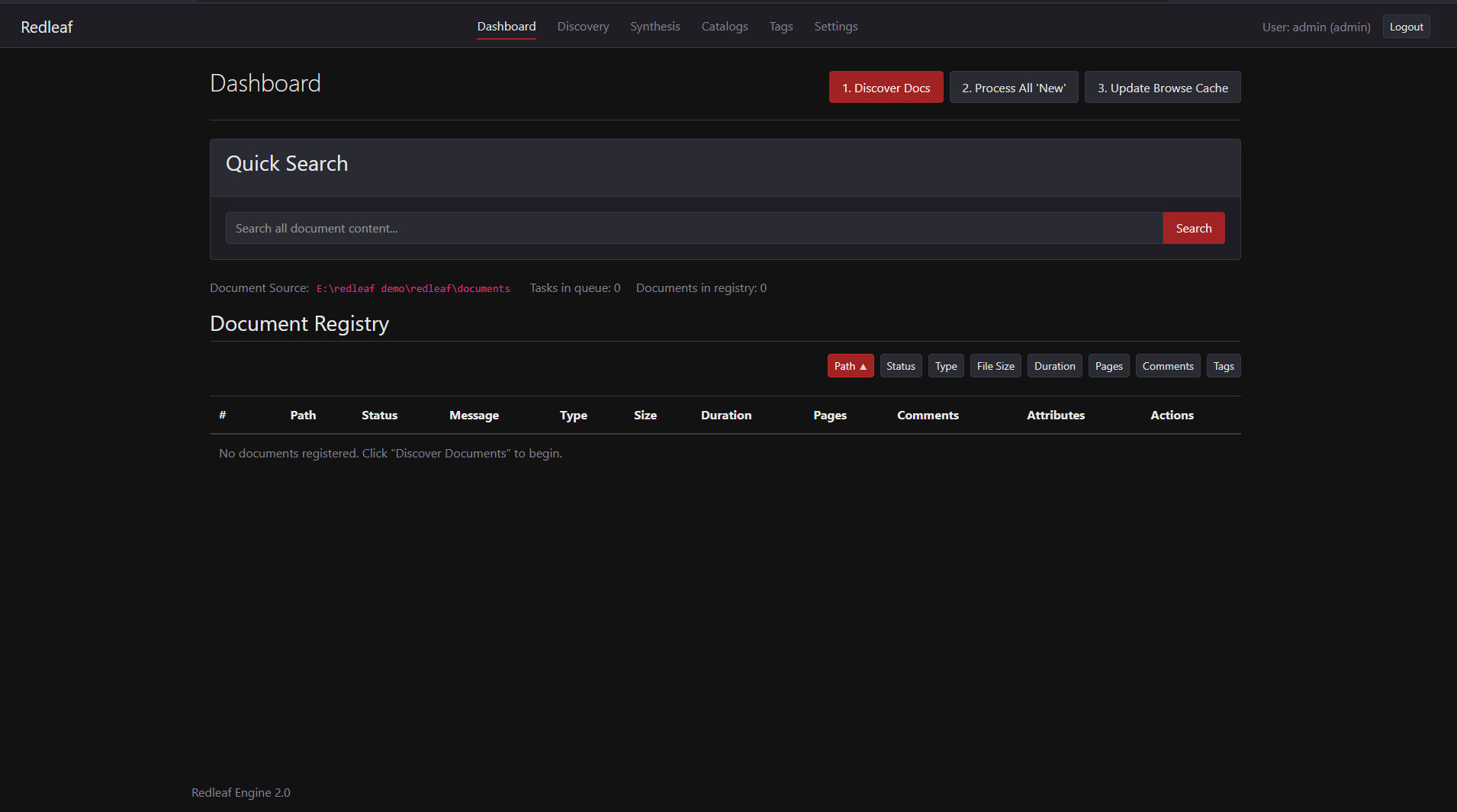Posts
Curators and Explorers
Today marks a major milestone for the Redleaf Engine. I’m thrilled to announce a new set of features that transform Redleaf from a personal knowledge tool into a powerful platform for distributing curated datasets and enabling team collaboration.
The core idea is simple but powerful: what if you could do all the heavy lifting of processing hundreds of documents and then package the entire, fully-analyzed knowledge base into a single, portable unit? What if you could send that “knowledge package” to a colleague, a research team, or even publish it for the world to explore?
Redleaf Tutorial 2 Core Workflow
Now that you have Redleaf installed and your documents added, it’s time to build your knowledge graph. The Redleaf Dashboard features three main workflow buttons that control the entire process. This guide explains what each one does.

The Three Main Workflow Buttons On The Redleaf Dashboard.
The Three-Step Process
The core workflow is designed to be simple and explicit, giving you control over when your computer’s resources are used. The process consists of three sequential steps:
Redleaf Engine Update
I’ve always been struck by the fact that while our computers can store files, they don’t really understand them. That’s the idea behind Redleaf—and I’m excited to announce that version 2.0 is now ready.
For anyone new to the project, Redleaf is a local-first knowledge engine. The goal is to take a folder of documents (PDFs, transcripts, HTML, etc.) and turn it into a private, interconnected knowledge graph that you actually own and control.
Anatomy of a Hugo Theme
My recent journey into building a Hugo blog led me down a rabbit hole of complex themes. While powerful, they often felt like a black box. I decided to strip everything away and ask: what are the absolute essentials to make a Hugo theme work?
It turns out, you only need three core files.
- The Skeleton: layouts/_default/baseof.html
This is the master template for the entire site. It’s the HTML document that holds everything else. The most important part is the {{ block “main” . }} section, which acts as a hollowed-out space where other templates will inject their content. code Html IGNORE_WHEN_COPYING_START IGNORE_WHEN_COPYING_END